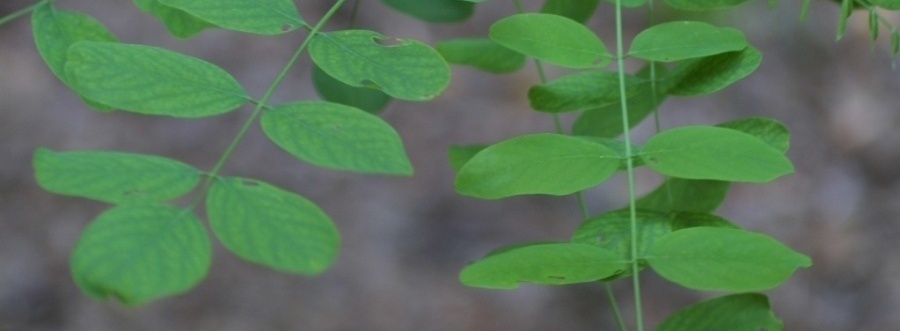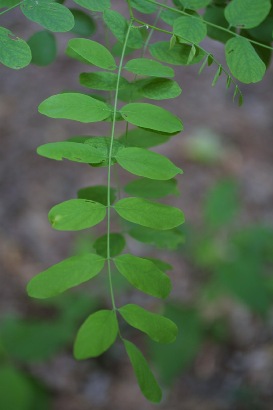
Fun Facts
Robinia pseudoacacia is an invasive species! This means
that when the black locust has been introduced to a new
environment, it tends to compete with native species and take over in that environment. Since this species loves the sun,
as I mentioned earlier in my Habitat
page, it grows rapidly in open areas with lots of light and no
shade, driving other sun-loving plants away. Also, the
black locust’s fragrant white flowers compete for pollinating
bees, increasing the competition with native plants.
Steven J. Baskauf, 2002.
Bioimages
 It turns out this tree has many uses for humans as well! The
black locust has served ornamental purposes, and on top of that, it has been planted to
prevent soil erosion. This tree is also a nitrogen
fixer, so besides being planted to keep soil in place, it is
planted to help enrich soil too.
It turns out this tree has many uses for humans as well! The
black locust has served ornamental purposes, and on top of that, it has been planted to
prevent soil erosion. This tree is also a nitrogen
fixer, so besides being planted to keep soil in place, it is
planted to help enrich soil too.
So why should anyone be interested in Robinia pseudoacacia? Any
organism that is pleasing to the eye with gorgeous white
blossoms while toxic at the same time is definitely worth a
look. Also, the mere complexity of this tree is amazing! All
the structures it has evolved in order to thrive, and the
crucial role it plays in the forest ecosystem makes this plant
truly extraordinary.
To learn a little bit about myself, continue on to my
About Me page!
To see my references, click here.
Return Home